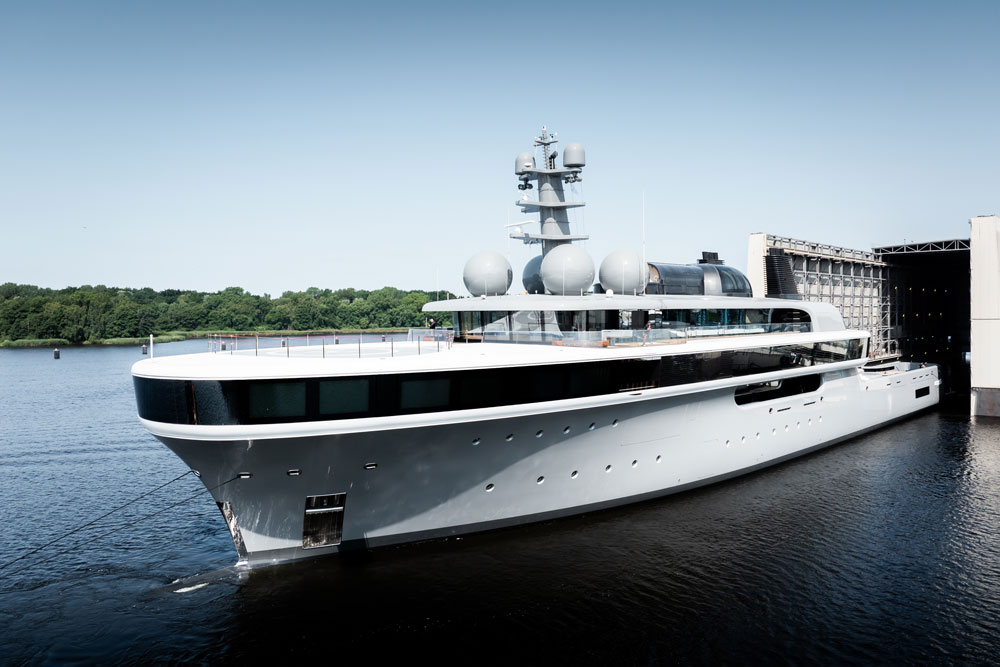They have now been in service for a quarter of a century: the mtu Series 2000 and 4000. over 100,000 engines have been sold in the last 25 years, clocking up more than 320 million operating hours – something that the manufacturer Rolls-Royce Power Systems is celebrating these days.
To date, Rolls-Royce Power System[ds_preview]s has delivered 52,000 Series 4000 engines and 65,000 Series 2000 engines. These are in mobile and stationary use worldwide. The Series 4000 was first presented in 1996 by the then MTU Friedrichshafen at the SMM trade fair in Hamburg. According to Rolls-Royce, the Series 4000 diesel engines were the first of their kind to be equipped with common-rail injection as standard – even before this became standard in the automotive industry. “The engines were way ahead of their time and have been regarded as the industry standard ever since,” says Otto Bücheler, who was involved in the development of the engines from the very beginning and is now head of marine engine development for the mtu Series 4000.

With sustainable fuels from 2023
“The engines not only have an impressive history. They will also accompany Rolls-Royce Power Systems into an even more successful future,” says Andreas Schell, CEO of Rolls-Royce Power Systems. From 2023, both Series 4000 and Series 2000 engines will be certified for use with sustainable fuels. “CO2-neutral mobility and energy generation is therefore also possible with combustion engines thanks to the use of sustainable fuels,” adds COO Otto Preiss.
Emissions as a development driver
High performance and reliability with low emissions are at the forefront of ongoing development, according to Rolls-Royce. Most recently, Series 4000 engines for yachts and commercial vessels have “reached the pinnacle of emissions regulations” with EPA Tier 4 certification. The fact that the emission limits vary depending on the engine application and country of use is an additional challenge for the developers. “We are constantly improving the engines, and if I look at a current 4000 or 2000 engine, we have redeveloped most of the components to meet the increased requirements for performance, consumption and emissions,” says Otto Bücheler. Nevertheless, the engines have retained their “typical appearance and external dimensions”, because according to the manufacturer, one thing has always been important: The appearance of the engines, and therefore the interfaces to customer applications, should change as little as possible so that older vehicles could also be remotorized with new engines.
The engine can also run on gas
Just three years after the introduction of the diesel engine version of the mtu Series 4000, the 4000 was also launched on the market in 1999 as a stationary gas engine version for power generation. On July 1, 2020, the Series 4000 gas engines for mobile use in ships celebrated their premiere. Since then, they have been powering two ferries operated by shipping company Doeksen in the Netherlands. According to the manufacturer, the mtu gas engines already fall significantly below the limits of current emission guidelines (IMO III) without exhaust gas aftertreatment, e.g. the particulate mass is below the detection limit. They also emit no sulphur oxides and only small amounts of nitrogen oxides.
The future is hybrid
In the future, engine developments will continue to focus on minimizing pollutant and greenhouse gas emissions. In addition to the approval of engines for sustainable fuels that enableCO2-neutral operation, the increasing use of 2000 and 4000 series engines in hybrid systems is also an important development goal, according to Rolls-Royce. This is because drive systems can be operated even more efficiently in combination with electric motors and batteries. “The Series 2000 and 4000 are not only our successful products today, we also want to move into a climate-neutral future with them and develop them so sustainably that we can celebrate the next anniversary in 25 years’ time,” says Schell.











